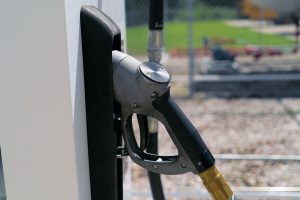Will More Facts Help?

To keep the adoption of domestic fuel momentum going, I’m going to share some facts:
Fact No. 1:
· U.S. average price per gallon of gasoline on March 30, 2012: $3.90
· U.S. average price per gallon of gasoline on March 30, 2011: $3.71
· U.S. average price per gallon of gasoline on March 30, 2010: $2.81
Fact No. 2:
It is estimated that the U.S. military spends more than $10,000,000,000 per year to guard the Persian Gulf to protect our addiction to foreign oil. That’s $10 billion.
Fact No. 3:
Last June the U.S. and 27 other countries tapped the world oil reserves to release 60 million barrels to drive down the cost of fuel. At that time the average cost per gallon of gasoline in America was $3.61. Within 30 days, it was $3.69. And now? See above. (Guess that plan didn’t work very well.)
Now, I’m going to share a few opinions:
Opinion No. 1:
There are three key variables that drive gasoline prices:
· Actual or prospective turmoil in the Middle East.
· Chinese demand on a finite supply from common sources.
· Perceived lack of alternatives to gasoline.
Opinion No. 2:
The government’s alternative fuel tax incentives (including a $.50 per gallon tax credit) dried up at the end of 2011. This credit was important to demonstrate a competitive gap between gasoline and gaseous alternative fuels like compressed natural gas and propane, especially when gas prices were $2.81 per gallon. Now that gas prices have — and will continue — to increase, we have essentially recaptured that $0.50 gap, plus another $0.50.
Opinion No. 3:
If you are waiting for some other subsidy to happen before you start or accelerate your domestic fuel adoption, it won’t be happening anytime soon. But you don’t need it. You’ll get another fifty cents or more difference at the pump soon enough.
If you are a fleet that hasn’t been looking at or making moves to adopt a domestic fuel in the past three years, please be aware that you are hurting, not helping, our domestic energy security and economics. Keep sitting on your hands while the rest of us improve our position with respect to our fuel costs.
If you are a fleet that has taken a leadership position and changed your fuel source, congratulations! As of yesterday you were paying around $2.00 per gallon for natural gas or propane. Not only are you saving money, you are helping this country take necessary steps to a healthy energy future.
So here’s your fuel for thought. I was in a meeting earlier this month with a highly respected and well-known Navy vice admiral (retired). He still tours in the Persian Gulf, has friends and family who serve over there, and possesses a huge depth of knowledge on the subject of American energy. He explained to me that the adoption patterns of American fleets over the next two to three years is the most critical factor for America to maintain its position as a global power. In short, we are at a point where each of our energy decisions will contribute to a healthy America.
Please make something happen on your end.













